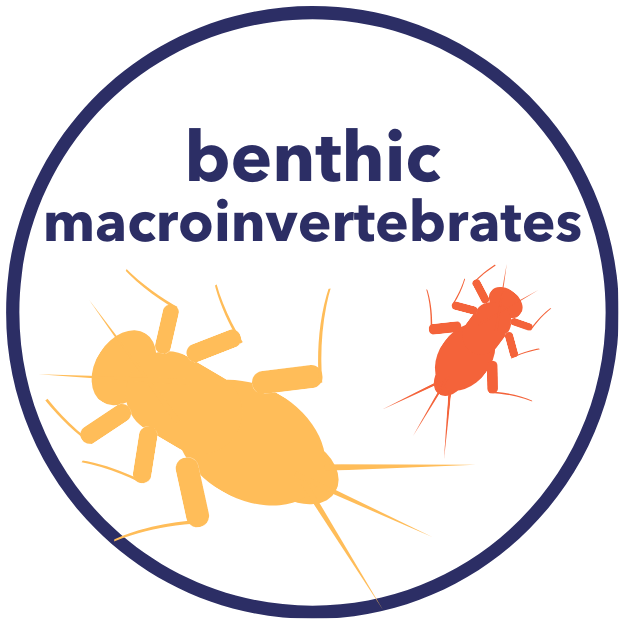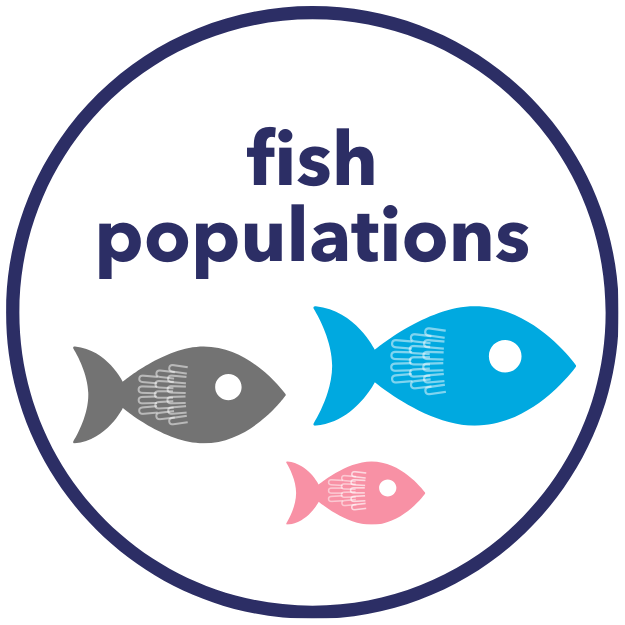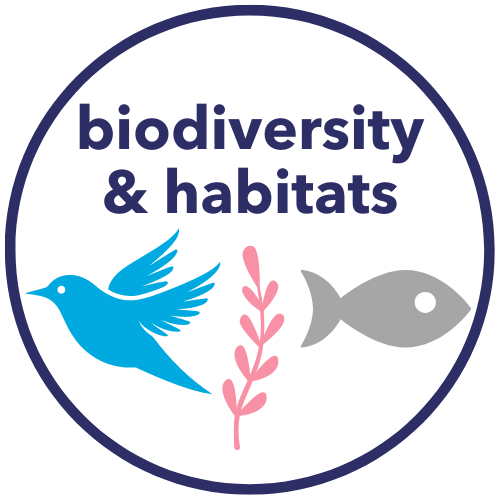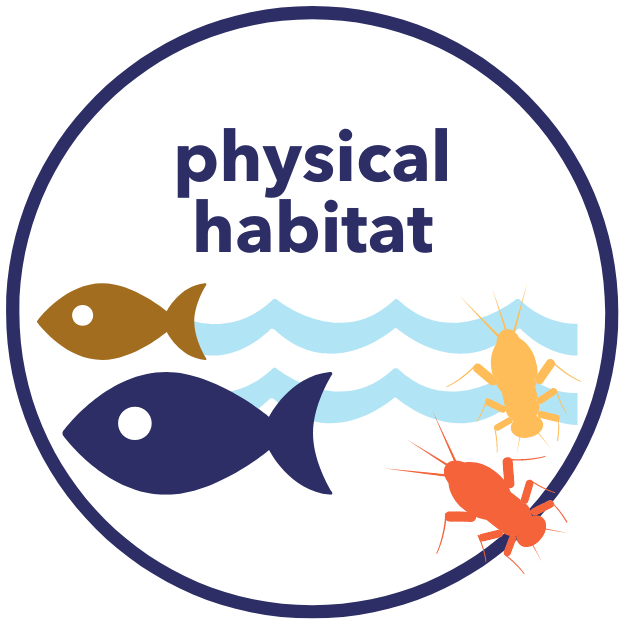
State of the Streams
Our streams need our help and
there are ways you can take action
Why streams matter…
Renowned for its iconic monuments and history, the DC Region is also distinguished by its lush, verdant landscapes. Essential to that scenic beauty are the streams and watersheds that support our region’s ecological health and elevate the quality of life for all of us who live here.
Healthy streams are the lifeblood of our forests and green spaces, serving as precious habitats for a diverse range of flora and fauna. But our streams need our help!
The 2024 State of the Streams report is a unique snapshot of five important natural resources in our region: Accotink Creek, Little Falls Branch, Rock Creek, Seneca Creek, and Sligo Creek.
What makes this report so meaningful are the comprehensive criteria that measure the impacts on nature, people, climate resilience, and more. These criteria also point to why and how you can help make a positive difference in the health of local streams.
…and what YOU can do today to help protect streams!
Become an advocate with the Action Network
Join organizations working to improve stream health
Track stream health as a Water Quality Monitor
Give to efforts designed
to protect our streams

About the Indicators
Click the icons below for descriptions of our measures of stream health

Water Quality, of course, is a critical part of stream health. Clean water in streams contributes to our health as well as the health of wildlife that depend on our streams.
We measured four factors (described below) to evaluate the water quality of our streams: impervious surface, benthic macroinvertebrates, fish populations, and water chemistry. Read on for details.

Impervious surfaces are hard areas, like pavement, that don’t absorb water. High amounts of impervious surface means that water from rainfall picks up dirt and pollution and then flows into our streams.
Being surrounded by as little as 30% of impervious surface significantly damages a stream. In our report, we found that all the streams studied, except for Rock Creek, were surrounded by at least 30% of impervious surface.

Benthic macroinvertebrates are organisms that spend part of their life cycle at the bottom of streams and rivers. These “Creek Critters” have varying tolerance levels for pollution and low oxygen. As a result, the presence of certain macroinvertebrates can help assess a stream’s health.
(Learn more by downloading our free Creek Critters app)

Like benthic macroinvertebrates, the types of fish populations that thrive in a stream are another measure of overall health.
This metric is also called the Fish Index of Biotic Integrity or FIBI.

Water chemistry is an evaluation of various elements conducive to supporting healthy plants and animals in a stream.
Although there are a wide variety of factors that can be measured in water chemistry, this report focused on each stream’s temperature, pH, dissolved oxygen levels, and specific conductivity.

Biodiversity & Habitats evaluates how streams support a wide range of plants and wildlife. This wide range is important to clean air and healthy food. The Mid-Atlantic region is particularly biodiverse, and our streams are an important part of that.
In this report, we looked at how four different factors affect each stream’s biodiversity: stream blockages, invasive plants, physical habitat, and birds. See below for more!

Even with clean water and plenty of food, some fish populations can still suffer if conditions prevent them from swimming freely through a stream. Obstacles like dams, waterfalls, and sewer line blockages are identified as part of a fish passage indicator or stream blockages.

Invasive plants can spread quickly through a habitat monopolizing resources but offering little or no benefit in return. Invasives compete for water, soil nutrients, and space, but because they are typically non-native to the region, native birds and wildlife won’t or can’t eat them.

The Physical Benthic Habitat Index measures the physical habitat of a stream. Important factors that influence this habitat are water flow, erosion, and the streambed or substrate. These all affect how suitable a stream habitat is for various organisms.

Like fish and benthic macroinvertebrates, birds are another excellent indicator of stream health. Data on birds was collected by identifying the species that reside along each stream. Each stream plays host to many species of native and migratory birds at least somewhere in the watershed.
Click here for additional details about our methodology regarding Biodiversity & Habitat

Our Climate Resilience indicator measures how each stream protects itself and humans against the negative effects of climate change, including flooding, air pollution, and extreme heat.
We used four different factors to score our streams on climate: tree canopy, air quality, riparian buffer, and wetlands.
Due to the loss of wetlands, all but one stream scored 0 in that particular metric. Learn more below.

Tree canopy is a measure of the percentage of land that is shaded by trees. A dense tree canopy protects a stream from being degraded by invasive plants, urban development, and climate change.
People living in communities with a dense tree canopy enjoy protection from extreme heat, reduced air pollution and flooding, and lower electric bills for cooling homes and buildings.

Air quality is a measurement of the pollution in the air we breathe – everything from pollutants like vehicle emissions or gas stoves to climate disasters like smoke from wildfires. Trees help clean our air but they can’t do it all. Air monitoring stations collect air quality data mainly used by government agencies. No monitoring stations are located within the watersheds in this report, so the scores reflect data from monitoring stations closest to each stream.

Stream buffer (or riparian buffer) describes the plants and trees that grow along a stream or river. That buffer is critical to a stream’s ecosystem in many ways. A robust buffer regulates stream temperatures to protect fish, benthic macroinvertebrates, and other wildlife from the warming temperatures of climate change. Healthy stream buffers also protect stream banks from erosion caused by more intense storms.

A wetland is land covered by or saturated with water at all times or during certain seasons in the year. Swamps and marshes are common examples. Wetlands mitigate many of the effects of climate change by providing habitat for animals, reducing flooding by holding excess water, and storing greenhouse gases.
Click here for additional details about our methodology regarding Climate

Every person being able to access and enjoy the benefits of their nearby stream is important to our connection to our streams and watersheds.
We scientifically evaluated two indicators for access to the five streams: tree equity and park access.

Trees are crucial for a healthy ecosystem, as well as human health, environment, and economies. Biased land use policies, redlining, and racial covenants have resulted in many low-income neighborhoods and neighborhoods of color having fewer trees. This worsens issues like air pollution, oppressive heat, flooding, public health, and even crime. The American Forests’ Tree Equity Score helped us score this metric.

Access to green space (most often in the form of parks in urban areas) is vital to supporting human health and resilient communities. Park access, according to The National Recreation and Park Association (NRPA), is the “just and fair quantity, proximity and connections to quality parks and green space, recreation facilities, as well as programs that are safe, inclusive, culturally relevant and welcoming to everyone.”
Click here for additional details about our methodology regarding Access
Thank you to everyone who helped make the
State of the Streams Report possible!
Partners
Learn more about these organizations at the forefront of protecting local streams:
Join, Volunteer, or Donate!
Special thanks to
Raines Family Fund
Researchers
Heather Bourne, Project Manager
Katie May Laumann, Ph.D., Chief Scientist
Nature Forward Staff
Lisa Alexander, Executive Director
Lydia Lawrence, Director of Conservation
Renee Grebe, Northern Virginia Conservation Advocate
Denissa Guitarra, Maryland Conservation Advocate
Jamoni Overby, DC Conservation Advocate
Gregg Trilling, Community Outreach Manager
Vince Robinson, Director of Marketing and Communication
Kristin Cook, Database and Email Assistant
Lisa Goodnight, Audience Engagement Manager
Ben Israel, Staff Photographer










